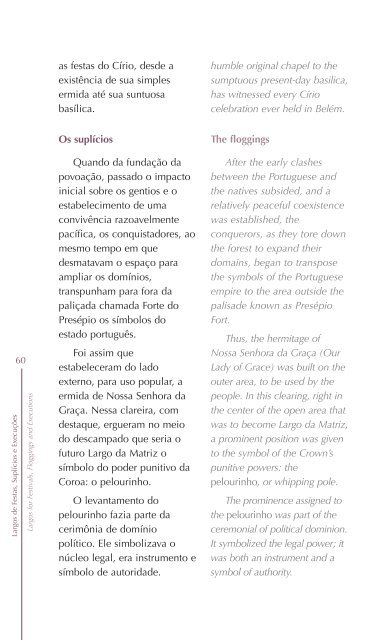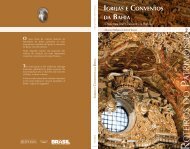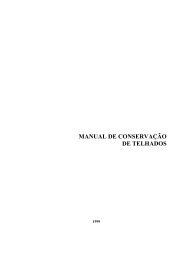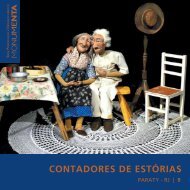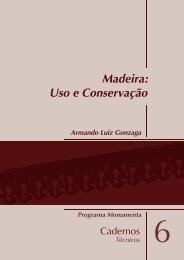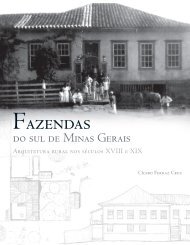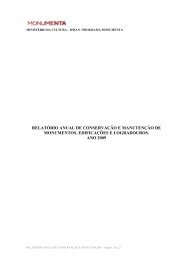LARGOS, CORETOS E PRAÇAS DE BELÉM - Monumenta
LARGOS, CORETOS E PRAÇAS DE BELÉM - Monumenta
LARGOS, CORETOS E PRAÇAS DE BELÉM - Monumenta
You also want an ePaper? Increase the reach of your titles
YUMPU automatically turns print PDFs into web optimized ePapers that Google loves.
Largos de Festas, Suplícios e Execuções<br />
60<br />
Largos for Festivals, Floggings and Executions<br />
as festas do Círio, desde a<br />
existência de sua simples<br />
ermida até sua suntuosa<br />
basílica.<br />
Os suplícios<br />
Quando da fundação da<br />
povoação, passado o impacto<br />
inicial sobre os gentios e o<br />
estabelecimento de uma<br />
convivência razoavelmente<br />
pacífica, os conquistadores, ao<br />
mesmo tempo em que<br />
desmatavam o espaço para<br />
ampliar os domínios,<br />
transpunham para fora da<br />
paliçada chamada Forte do<br />
Presépio os símbolos do<br />
estado português.<br />
Foi assim que<br />
estabeleceram do lado<br />
externo, para uso popular, a<br />
ermida de Nossa Senhora da<br />
Graça. Nessa clareira, com<br />
destaque, ergueram no meio<br />
do descampado que seria o<br />
futuro Largo da Matriz o<br />
símbolo do poder punitivo da<br />
Coroa: o pelourinho.<br />
O levantamento do<br />
pelourinho fazia parte da<br />
cerimônia de domínio<br />
político. Ele simbolizava o<br />
núcleo legal, era instrumento e<br />
símbolo de autoridade.<br />
humble original chapel to the<br />
sumptuous present-day basilica,<br />
has witnessed every Círio<br />
celebration ever held in Belém.<br />
The floggings<br />
After the early clashes<br />
between the Portuguese and<br />
the natives subsided, and a<br />
relatively peaceful coexistence<br />
was established, the<br />
conquerors, as they tore down<br />
the forest to expand their<br />
domains, began to transpose<br />
the symbols of the Portuguese<br />
empire to the area outside the<br />
palisade known as Presépio<br />
Fort.<br />
Thus, the hermitage of<br />
Nossa Senhora da Graça (Our<br />
Lady of Grace) was built on the<br />
outer area, to be used by the<br />
people. In this clearing, right in<br />
the center of the open area that<br />
was to become Largo da Matriz,<br />
a prominent position was given<br />
to the symbol of the Crown’s<br />
punitive powers: the<br />
pelourinho, or whipping pole.<br />
The prominence assigned to<br />
the pelourinho was part of the<br />
ceremonial of political dominion.<br />
It symbolized the legal power; it<br />
was both an instrument and a<br />
symbol of authority.


